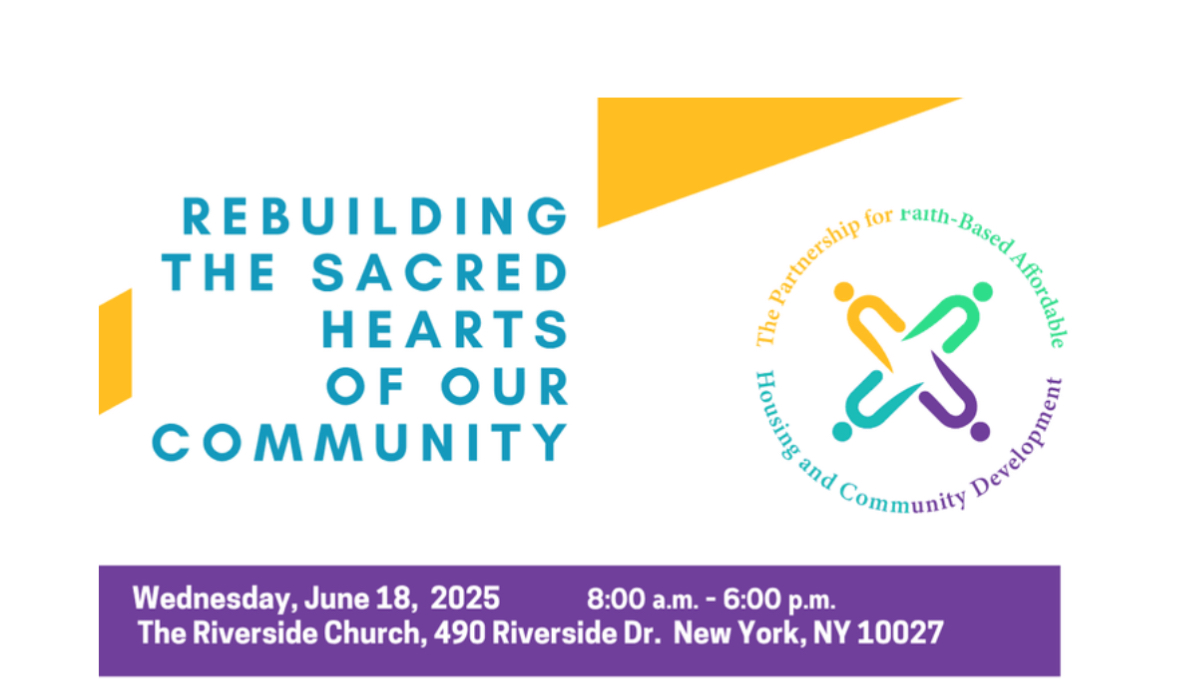Ensuring the Impactful and Equitable Implementation of GGRF in Communities: Three Key Factors for Success

The Inflation Reduction Act authorized the Environmental Protection Agency (EPA) to allocate over $27 billion through the Greenhouse Gas Reduction Fund (GGRF) to fund the expansion of green building technologies and energy-efficiency measures in the US. Reflecting the urgency of climate change, these funds must be deployed within seven years to meet the goals for rapidly reducing CO2 and other greenhouse gases.
According to the Intergovernmental Panel on Climate Change (IPCC) buildings are responsible for a significant portion of global greenhouse gas emissions, accounting for an estimated 28% of total emissions worldwide.
Research by the World Green Building Council suggests that increasing the use of renewable energy in buildings could lead to a 38% reduction in global CO2 emissions by 2050.
GGRF will help scale the integration of building technologies, such as rooftop solar, heat pumps, sensors and innovative energy management systems, can optimize energy use, and reduce emissions.
An equity mandate, known as Justice 40, requires that 40% of these funds be directed toward the most economically vulnerable populations, including low and moderate-income households and communities of color. These historically underserved groups, most vulnerable to the impacts of natural disasters and pollution. They stand to benefit from improvements in local air quality and reductions in local sources of toxic emissions. The jobs and small business opportunities resulting from GGRF can also yield much needed economic opportunities.
CDFIs, Green Banks, and similar nonprofit financial institutions, will likely partner with Community-based organizations to deploy GGRF. A major aim is to support the transition to net zero in multi-family housing, single-family homes within historically underserved communities.

There is a mere seven-year time frame to deploy GGRF funds while ensuring an equitable and impactful process.
In this post, we highlight three key factors for success in this ambitious undertaking:
- 1. Strengthening Community-Based Organizations (CBOs) Capacity
- 2.Community Engagement
- 3. Advocacy and Policy
1. Strengthening CBO Capacity
The Role of CBOs in Implementing GGRF
EPA funds will flow to national nonprofit organizations who in turn can deploy some of the funding to CBOs. We believe CBOs will need to be part of the funding stream to ensure that funds reach affordable housing developments, homeowners, small contractors and others.
Therefore, local organizations could likely be the main point of engagement for homeowners and small businesses in underserved communities who will be accessing GGRF-related incentives and financing.
Minimizing financial barriers is key in making the green transition scalable and equitable. In addition to targeting net zero measures within their own building portfolios, CBOs can play an important role in scaling GGRF deliverables through outreach to small landlords and homeowners in their catchment area. They can also facilitate access to subsidies, tax incentives, and low-interest loans to decarbonize.
Strengthening CBOs’ Organizational Capacity
For many community-based organizations their role in GGRF activities may represent their largest undertaking. The increase in clients and projects could be exponential. The newness of the green energy and energy efficiency measures being pursued and the tight time frame means this work will come with a steep learning curve for organizations. The capacity of community-based housing groups is key to the success of implementing GGRF and rapidly decarbonizing homes.
The “speed- to- market” nature of this work requires rapid scaling and building of administrative systems and infrastructure. It will therefore be imperative that organizations have operational measures in place such as standard operating procedures, sound board governance and efficient accounting systems to manage the new workload – to help minimize delays and inefficiencies in certifying and evaluating projects, supporting access to loan financing and staying in compliance with federal funding guidelines.
Efficient fund deployment ensures that resources are utilized effectively to maximize the impact of greenhouse gas funding, streamlining administrative processes, and reducing bureaucratic hurdles to expedite the allocation of funds.
Preparing organizations for their important role in GGRF will require support from many funding sources and especially the philanthropic community. In addition to federal funds for home renovations, donor investments in organizational infrastructure such as professional development, staffing, project and client management technology, board training, and technical assistance is key to the success of these initiatives.
It will be advantageous for CBOs to have access to funding streams beyond GGRF that can be invested in organizational infrastructure and their existing supportive programs.
Nonprofit networks can also serve as a valuable resource for capacity building, facilitating the exchange of knowledge and best practices in community-centered decarbonization initiatives. In addition to providing direct funding to CBOs involved in GGRF activities, donor support for these inter-organizational collaborations is crucial.

2. Community Engagement
Maximizing Community Benefits
As previously mentioned, an important aspect of the GGRF involves providing access to home loans, including to low-resourced homeowners for green energy measures which in some cases provides rebates and financial incentives.
With billions of dollars allocated for retrofits within a short timeframe, ample labor and resources must be readily accessible to ensure the successful deployment of funds. There is a significant opportunity to enhance the local workforce and stimulate small business participation, which can play a pivotal role in strengthening local economies. Initiatives such as training
disconnected youth and engaging small contractors can contribute to building up the local workforce and fostering economic growth.
Building community support will require having early tangible successes. Partnerships with other healthy building initiatives can supplement this work. There are other funding streams that can support overlapping community development efforts such as new housing and economic developments, parks and green spaces.
CBOs must be connected to the plethora of resources to support other local environmental concerns both indoors (i.e. healthy building material and outdoors (such as access to green space).
Successfully planning and implementing a holistic green transition requires close collaboration with existing community partners. Tapping into and amplifying the social, cultural and economic assets that already exist.
3. Policy, Advocacy and Regulatory Measures to Ensure Transparency, Equity and Impact
Advocacy and Policy Implementation
At the state and municipal levels policy interventions and regulatory frameworks have been essential for driving equitable decarbonization efforts in the building sector.
Some progress has already been made in implementing green energy and energy efficiency measures across the nation. This demonstrates the importance of supportive policies, including building codes and standards, to protect building owners while supporting energy efficiency and renewable energy adoption.
As GGRF unfolds and its intricacies become clearer, additional policy considerations and program adjustments will likely be necessary. Particularly relevant are concerns about consumer protection as low-resourced communities are targeted for net-zero retrofits in their homes.
While CDFIs, Green Banks and nonprofit lenders will offer the best lending products for homeowners, other loans products will undoubtedly emerge from the broader market with terms that are unfavorable for borrowers.
Consumer protection regulations are key to ensure transparency in loan terms, including interest rates, fees, repayment schedules, and penalties. This can prevent predatory lending practices and ensure homeowners fully understand the terms of their loans.
Every effort must be made to protect home equity. For starters, a cap on interest rates on home repair loans for borrowers using GGRF incentives is one possible policy measure. This would be similar to first-time homeowners’ programs that have restrictions on the acceptable forms of loan products, interest rate and fees that can be used alongside federal subsidies.
Clear and comprehensive disclosure of loan terms and potential risks associated with borrowing for green energy measures is key. This includes providing information about potential fluctuations in energy savings, payback periods, and potential impacts on property.
State and local governments can require that homeowners receive financial counseling from an approved community-based homeownership counseling provider. Counselors can help borrowers make informed decisions about borrowing for green energy measures. This can include information about alternative financing options, potential savings, and risks associated with borrowing. There is a precedent for this in other government sponsored lending programs.
Guidelines for monitoring and inspections to ensure compliance with regulations and quality standards is also key. This can include regular audits of loan providers and inspections of GGRF-funded projects.
In certain regions local consumer complaint review boards may be needed for homeowners to file complaints and seek recourse in case of issues with contractors, lenders or loan servicers. This can include avenues for dispute resolution and enforcement of consumer protection laws.
Policy measures should prioritize the insights of advocates and community leaders who possess firsthand knowledge of the vulnerabilities faced by their communities.
Conclusion
As a global community, we are becoming increasingly aware of the critical importance of transforming buildings and infrastructure across the nation to meet net-zero standards. There’s a heightened sense of urgency to implement effective strategies to support success.
The complexity of greenhouse gas reduction initiatives necessitates collaboration across various sectors. By engaging diverse stakeholders, including government agencies, businesses, community organizations, philanthropy, and academia, we can leverage collective expertise and resources to drive meaningful change.
Denise Scott, Founder of Bell and Notice Advisors, is a nationally recognized leader in community development finance. Over the course of her nearly 40 year career she oversaw the implementation of billions of dollars of investments in cities and rural communities nationwide.
Anasa Laude, LEED AP BD+C, Managing Director of ILE Strategies, empowers nonprofit and public sector leaders with fund development and strategic planning solutions to achieve climate resiliency and economic impact.


